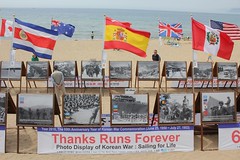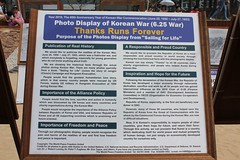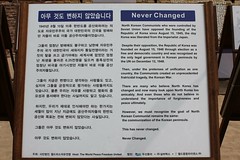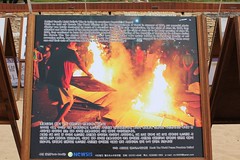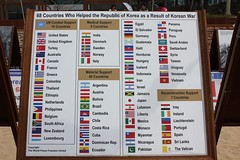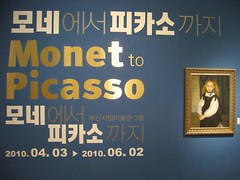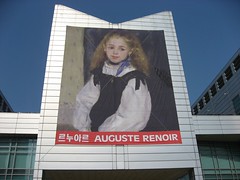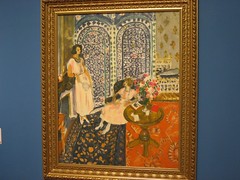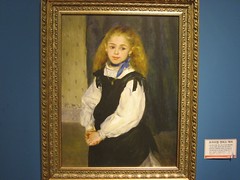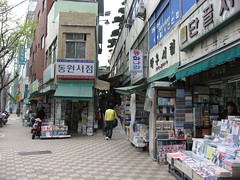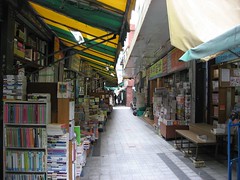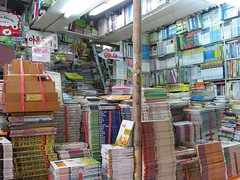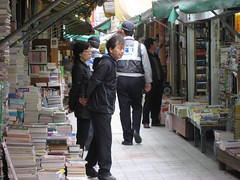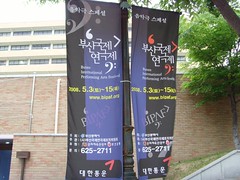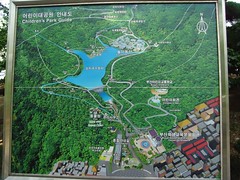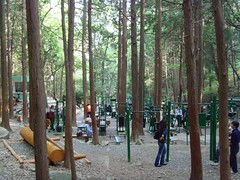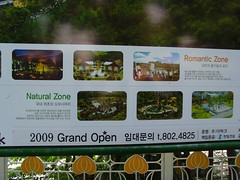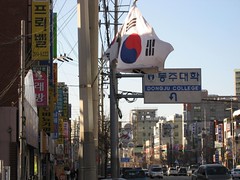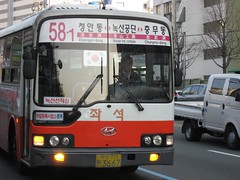Introduction
Today I’m going to talk about Korean history. Now you know what they say about Korea having 5,000 years of history [or more], so obviously I’m not going to discuss all of it – only bits.
Knowing history
I didn’t know a lot about the history of Korea before coming here. Of course, everyone knows about the Korean War... or maybe they don’t – a few months ago I read about a 2008 survey conducted by the Ministry of Public Administration and Security, and in it of 1,016 Korean middle and high school students surveyed, 51% didn’t know the war started with an invasion by North Korea. In fact 14% blamed Japan for starting the war, 13% blamed the United States, 11% blamed the Soviet Union, and 2% said it began when South Korean invaded the North. I found this lack of knowledge of the historical facts of something which is so important here very surprising. There was another survey conducted last year by Gallup, and that produced broadly similar results.
Don’t get me wrong. British children are no more familiar with their history – perhaps they are even less so, but South Korea has a strong reputation for its educational system, so that’s why I found the results so unexpected.
Haeundae Beach Memorial Day
Last year I was on Haeundae Beach on Memorial Day. A group were running a photo display of the Korean War on the beach and they had the flags of the 68 countries which had assisted South Korea in the conflict. The lack of knowledge of these historical events was one of the issues the group mentioned in its display.
In fact, it was also interesting that the group had pictures of the alleged destruction of one of their previous displays by a ‘candlelight rally’ in Seoul, so it suggests that history here can be a highly controversial subject.
Because they were highlighting the international effort there were pictures of British soldiers and their contribution in the Korean War amongst the display, and I have to say that was heartening to see. The U.S. carried a lot of the effort in the war but often other contributions get ignored in this and other historical events because of the cultural imperialism of Hollywood and the frequent rewriting of history it conducts as part of that. [It's not just truth sacrificed in the name of entertainment either - some of it appears to have a particularly nasty agenda].
885
I haven’t visited the U.N. Cemetery in Busan. I’ve looked over it from a nearby hill but haven’t been inside – I’ve been putting it off because I think it will be an upsetting experience. There are 885 British soldiers buried there. I didn’t know about them when I came to Busan. I find these kinds of numbers overwhelming – and it’s just a very small percentage of the total number of foreign casualties, let alone the Korean ones.
The Haeundae Beach display, which highlighted the sacrifices of people from other countries, carried the title “Thanks Runs Forever”. But maybe it doesn’t, because today in Korea foreigners are under attack, even receiving death threats, just for voicing opinions that some people here don’t like. Even I’ve been attacked for relating things I’ve seen in Korea, which perhaps don’t portray this country in a positive way. I don’t know what it is with these people – maybe they don’t know their history, and maybe they don’t care. But when foreigners are attacked – when I’m attacked – I think of those 885 British soldiers buried here in Busan, who fought to defend this country. People like Private G.W. Harrison – to mention only one random name of those 885 - who died on the 27th March 1952 at the age of just 19.
Affinities foreign and local
As much as I feel an affinity for my countrymen who fought and died here to defend South Korea, I also feel an affinity – as a former student activist myself - towards the student activists who fought against the dictatorship here. I saw a display about the Busan-Masan Democratic Uprising while I was at PNU [Pusan National University]. They risked their lives – not against an external aggressor – but for a domestic idea – democracy and freedom of speech in the face of an extreme right-wing regime. It’s something I hope foreigners will one day have here too as we battle against today’s right-wing threats.
Japan
Aside from the Korean War, and the Democratic Uprising, the other particularly well known part of Korean history overseas, is the Japanese occupation. I know it’s very much part of the ongoing narrative in South Korea, but even so I was a little surprised to see a statue of Park Jae-Hyuk – who threw a bomb at the head of the police station here in 1921 – in the Children’s Park. Parents were standing their small children beneath the statue to take photos of them. I guess the ‘Japanese awareness issue’ starts at an early age in Korea. I’ve also been to Tapgol Park in Seoul – the birthplace of the March 1st Movement, which was a really interesting place.
Korea has a long and unfortunate history of invasions, and I understand that the national psyche, even today, is traumatised by that, which manifests itself sometimes as this sense of many aspects of life being about Korea versus the rest of the world. In other words, understanding Korean history is important in understanding Korea today.
Mongols, more Japanese, Korean Neo-Confucian Radicals
I went on honeymoon to Gyeongju, the old capital of the 신라 [Silla] Kingdom, because my wife knows I’m interested in history. But I thought it would be like Kyoto, and of course it wasn’t, because over the years most of it has been destroyed by the Mongols and Japanese during their historic invasions, and Korean Neo-Confucian radicals [who oddly enough, as far as I can tell, seem to often get relegated to a footnote in the cultural-destruction blame game].
So Gyeongju wasn’t what I expected, but then what is? I saw many temples in the region, such as Bulguksa, but I left feeling honestly confused about what is real and what is a rebuilt copy. History is being destroyed in Korea – and it continues today with Beomeosa and Namdaemun.
And Modern Koreans
But it’s not just about the destruction of history which disappointed me, it’s also about the way that history is disrespected, even if just from a tourism perspective. For example, the first historical place I ever went to in Korean was Beomeosa, and there was a beautiful building there which housed the temple’s drum, and it’s a great sight and a great first ‘traditional Korean’ photo to take... except there are vending machines next to the building and phone boxes. Gyeongju has a similar issue. There’s a Korean folk village down there – Wolseong Yangdong - and obviously, like Beomeosa, it’s marketed as a tourist destination. But amongst all this 15th and 16th century architecture you have a big modern church and satellite dishes on the side of the traditional Korean houses. [It’s a ‘living’ historical village but for the effort the authorities are making you’d think they might have sorted out a cable TV solution for the residents, and the Catholic church I used to attend in England didn’t have a tall spire or fall into the architectural trap of looking overtly religious, so this can be done too I think, if the will is there].
I seriously banged my head in the folk village – low beams. It demonstrates the importance of understanding history [people used to be smaller and Korean architecture is sometimes designed accordingly].
I want to learn more about Korean history. During my time here, I’ve tried to come to terms with what Korea is, but to really understand that, I feel I need to also know what it was, and how it became what it is today. It’s an important part of living here.
Links
Busan e-FM
Inside Out Busan
Air date: 2011-03-30 @ ~19:30


